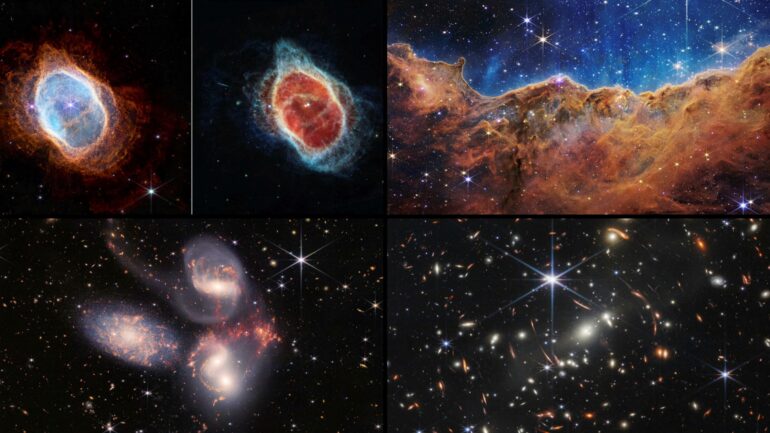Astronomers using the most powerful telescope ever built have identified a massive, densely packed galaxy 25 billion light years away.
The galaxy—known as GS-9209—formed just 600 to 800 million years after the Big Bang, and is the earliest of its kind found to date, researchers say.
A team led by Edinburgh researchers has used the James Webb Space Telescope to reveal in detail the properties of GS-9209 for the first time.
Star-studded galaxy
Despite being around 10 times smaller than the Milky Way, GS-9209 has a similar number of stars to our own galaxy.
These have a combined mass around 40 billion times that of our Sun, and were formed rapidly before star formation in GS-9209 stopped, the team says.
GS-9209 is the earliest known example of a galaxy no longer forming stars—known as a quiescent galaxy. When the team observed it at 1.25 billion years after the Big Bang, no stars had formed in the galaxy for about half a billion years.
Shutdown theory
Analysis also shows that GS-9209 contains a supermassive black hole at its center that is five times larger than astronomers might anticipate in a galaxy with this number of stars. The discovery could explain why GS-9209 stopped forming new stars, the team says.
The growth of supermassive black holes releases huge amounts of high-energy radiation, which can heat up and push gas out of galaxies. This could have caused star formation in GS-9209 to stop, as stars form when clouds of dust and gas particles inside galaxies collapse under their own weight.
Galaxy discovery
GS-9209 was first discovered in 2004 by Edinburgh Ph.D. student Karina Caputi, who was supervised at the time by Professors Jim Dunlop and Ross McLure in the University’s School of Physics and Astronomy. Caputi is now a Professor at the University of Groningen, Netherlands.
“The James Webb Space Telescope has already demonstrated that galaxies were growing larger and earlier than we ever suspected during the first billion years of cosmic history. This work gives us our first really detailed look at the properties of these early galaxies, charting in detail the history of GS-9209, which managed to form as many stars as our own Milky Way in just 800 million years after the Big Bang. The fact that we also see a very massive black hole in this galaxy was a big surprise, and lends a lot of weight to the idea that these black holes are what shut down star formation in early galaxies,” says Dr. Adam Carnall, of the University of Edinburgh School of Physics and Astronomy
The findings are published in the journal Nature.
More information:
Adam C. Carnall et al, A massive quiescent galaxy at redshift 4.658, Nature (2023). DOI: 10.1038/s41586-023-06158-6
Provided by
University of Edinburgh
Citation:
Ancient galaxy’s traits revealed using Webb telescope (2023, May 22)



